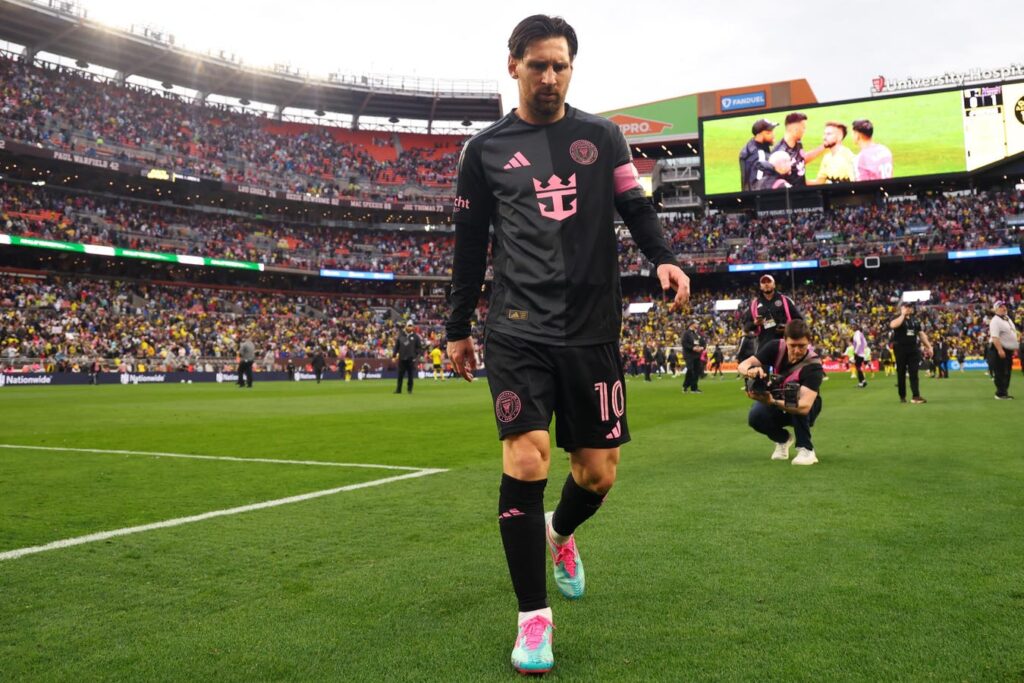Lionel Messi #10 of Inter Miami CF leaves the pitch after the MLS match between Columbus Crew and … More
Getty ImagesIt was a bit over a year ago that, ahead of Inter Miami’s 2024 regular season opener, that Apple senior vice president of services Eddy Cue publicly urged other MLS owners – perhaps playfully – to sign more stars.
As the 2025 summer transfer window approaches, there’s indication that at least a few MLS owners are trying to follow that directive.
The Chicago Fire are among the clubs rumored to be seriously pursuing Manchester City legend Kevin De Bruyne, who could potentially make an MLS debut a few days after his 34th birthday if he completes a summer move.
Los Angeles FC already brought in France all-time leading international goal-scorer Oliver Giroud – who has mostly struggled – and has been linked first to Antoine Griezmann and then Thomas Mueller.
But the idea that the arrival of more European stars near the end of their careers will somehow move the needle much further than Messi has done is a poorly formed one, and perhaps likely to result in more disappointment than success.
Because, frankly, it would no longer be a new development, happening time and again over the last decade, and in most cases leading to only incremental increases in global and domestic visibility.
Starpower Alone Isn’t The Issue
In case you needed reminding, here’s some European stars who have played in MLS since 2015:
- Steven Gerrard
- David Villa
- Frank Lampard
- Andrea Pirlo
- Andrea Pirlo
- Kaka
- Zlatan Ibrahimovic
- Wayne Rooney
- Thierry Henry
- Bastian Schweinsteiger
- Chicharito
- Gareth Bale
- Lorenzo Insigne
- Xherdan Shaqiri
This doesn’t include others of considerable European pedigree who either played or are playing with Miami: Luis Suarez, Sergio Busquets, Jordi Alba currently, and previously Gonzalo Higuain and Blaise Matuidi.
Of all those previous “stars” there were only two who generated hype anywhere close to the interest surrounding Messi: Ibrahimovic and Chicharito.
Unlike Messi, Ibrahimovic actively saught out the spotlight during his time in MLS, doing the talkshow circuit, engaging regularly and honestly with reporters, and so on. He did so in Los Angeles, arguably the MLS’ best media market for national exposure. And he was perfectly at ease playing a villain, a role that makes for compelling viewing.
Chicharito also benefitted from his market placement in LA, in his case mainly due to the proximity to an adoring Mexican fanbase throughout Southern California.
What Real Change Would Be
If Messi is going to represent a watershed moment in terms of changing how the league does business, there are two possibilities, and neither of them involve signing more aging strars.
The first is that MLS becomes more simlar to the NBA in the way stars partner with each other, mirroring how Messi and Suarez have partnered to help recreate the core of recent-past FC Barcelona teams.
The second is that MLS will start doing far more business with in-its-prime top European talent, rather than waiting for these late career years. To date, MLS ownership doesn’t look willing to do this by radically altering its salary roster rules or its calendar, most recently voting earlier this month to delay potential shift to a more-European-friendly fall-to-spring format until at least 2027.
Until that happens, MLS owners will have to wait on the next truly generational singular talent to reach twilight age, 10 or 20 or 40 years from now for the next player who can draw 60,000 to an MLS game in Cleveland, a two-hour drive from the “home” team’s normal home stadium. Messi did it this weekend. Cristiano Ronaldo might be able to do it. Pele and Maradona could’ve done it. That’s probably it – four players in the last 70 years.
That doesn’t mean clubs are wrong to pursue a De Bruyne or Mueller, two highly capable pros who can set a club culture and expand a local fanbase. But they will only be a drop in the bucket nationally. There’s Messi, and then there’s everyone else.
Read the full article here


